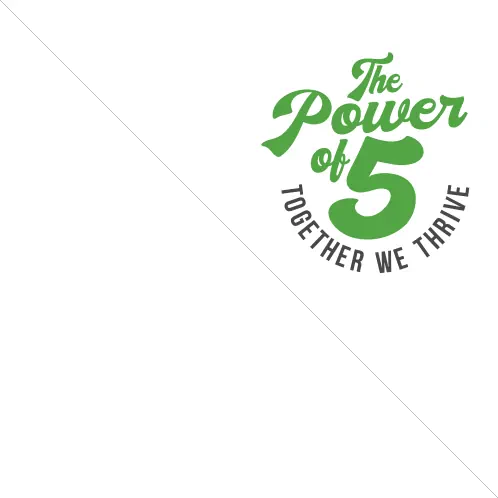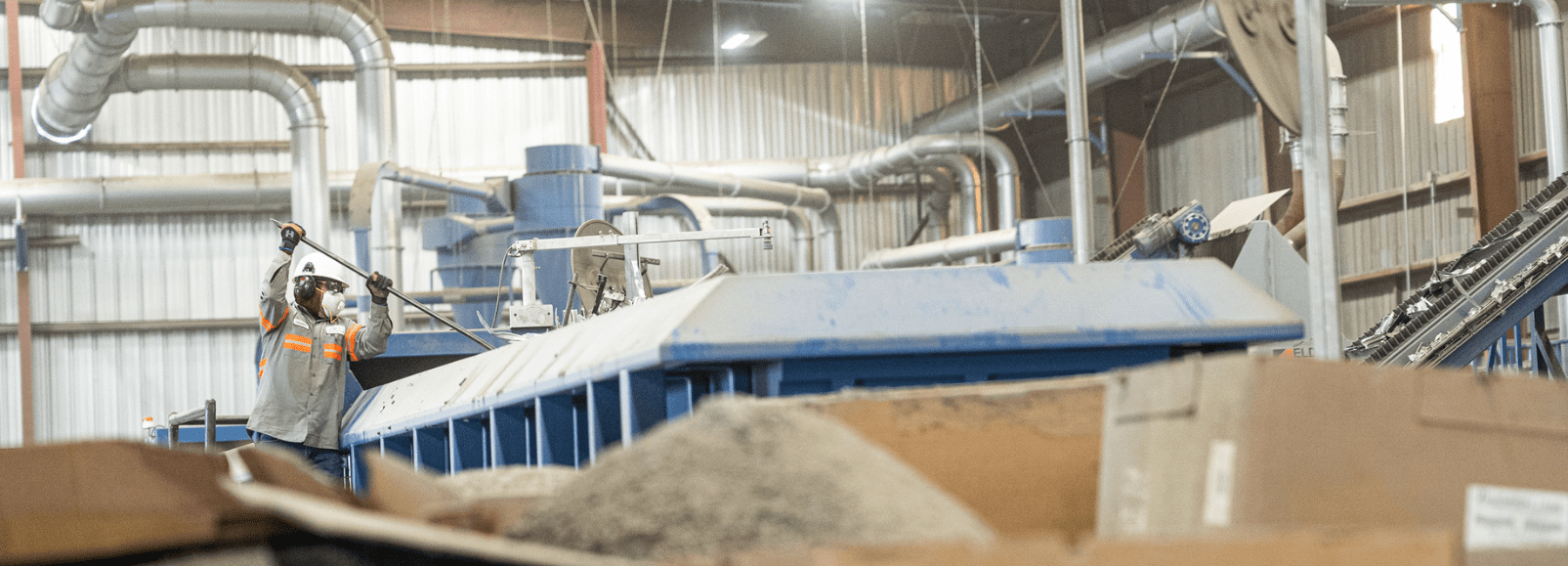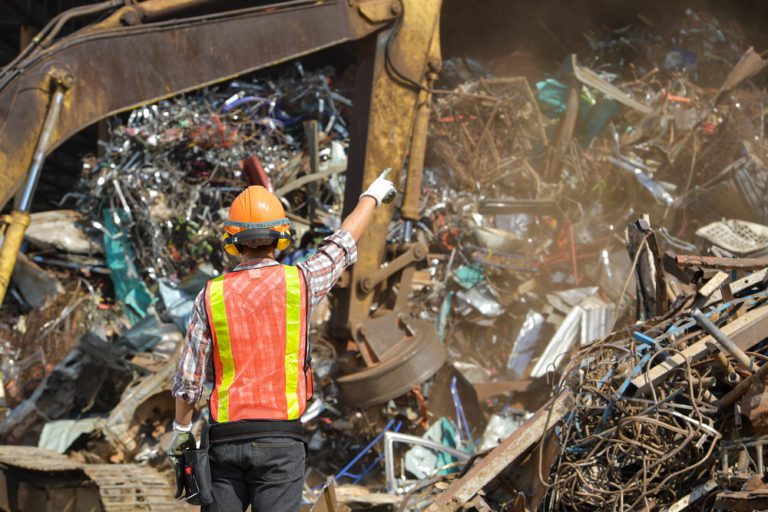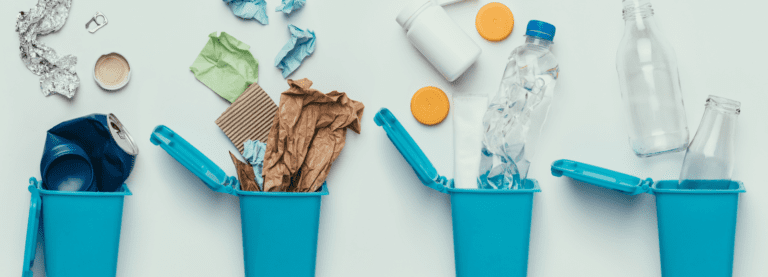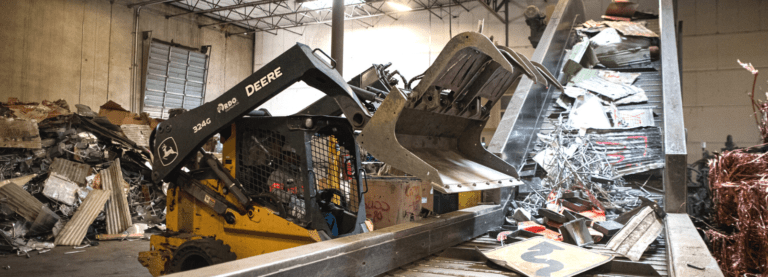Circularity is society’s pursuit of Sustainable Materials Management (SMM). But what is the circular economy (CE), and how will it inform the future of the metal recycling industry?
A circular economy keeps reusable products, services, and materials in circulation as long as possible, even indefinitely. The metal recycling industry is a significant player in the success of circularity. That’s because humans use rather than consume metal products, so there’s plenty of it around once we’re finished using a product. And fortunately, we can nearly recycle 100% of most metals indefinitely without any loss to the value and properties of the original substance[1].
This GEOMET article looks into the principles of the circular economy and why we should all care. It also goes into detail on metal recycling’s role in circularity. Plus, how we can all contribute to this new frontier of ethical sustainability in some way.
The Circular Economy–A Brief History
The Ellen MacArthur Foundation is a charity dedicated to developing a circular economy. It says that the circularity concept is not new. Indeed, our modern recycling systems have deep ancient historical and ethical origins. For example, scientists found evidence of recycling and melting down glass dating back thousands of years.
The mantra “reduce, reuse, and recycle” seems to have roots with the Romans and Greeks. And it may even go back as far as the bronze age, suggest researchers [2].
From Sustainable Living to Wasteful Consumerism
Humans started to exploit the earth’s natural resources on an industrial scale in the 19th century. These raw materials began to feed the emerging European factories set up to create consumer products. And the colonies of European nations gave producers ready access to global markets for their goods. Wasteful consumerism was born [3].
The circular economy has gained global momentum in recent decades. It’s as a direct response to growing concern for our environment and fatigue of modern culture’s consumerism.
Kenneth E. Boulding, an American economist and peace activist, talked about circularity in a book published in the mid-1960s. It looked at the circular flow of raw materials and energy and why we should embrace a cyclical system of production and consumption. But the term “circular economy” first appeared in 1988 in The Economics of Natural Resources [4].
The 3Rs of Circularity
The 3Rs approach to CE is Reduce, Reuse, and Recycle. This core principle prioritizes new and innovative waste management strategies. First, we focus on reducing virgin natural resource extraction and the energy used to mine and process raw materials. The aim is to prevent new materials from entering the cycle, focusing on the reuse of products for as long as possible before recycling them at the end of their lifecycle. And then, only as needed, pull new virgin resources into the economy.
The goal is to move away from our current and unsustainable linear economy to a circular one.
Linear Economy Vs Circular
The linear economy is a destructive and wasteful model by which humans take, make, and dispose of products and materials without emphasis on replacing what is taken. This process eats into a finite supply chain of natural resources. And disposing of these metal products often produces toxic waste and pollution. So it’s not only wasteful and unsustainable but also has an ecological impact for the environment and even human livability in an area.
From the Linear Model to the Cyclical
The planet’s natural systems function on a slow cyclical model evolved over billions of years. It has no use for landfills, unlike the linear model adopted and accelerated by humans. So a circular economy aims to return and renew goods made from highly recyclable metals and metal alloys.
But can the metal materials used in original products maintain their quality and continue to be valuable beyond their shelf life? The answer is absolutely. For the most part, metal material has an unlimited lifespan through recycling. That means we can reuse and recycle it indefinitely through a circular system so that its value can be recaptured and not lost as waste [5].
5 Benefits of the Circular Economy
With obvious benefits to the circular economy, why are humans slow to make the switch? The answer is that it involves substantial systemic changes to the way we live and established industries operate. That includes all areas of society, i.e., personal, business, and government levels. But awareness is growing, and change is happening, albeit slower than environmentalists would like.
#1 Reduced Demand on Raw Materials
The bottom line is that our world’s ore supply is finite and it’s unsustainable to keep extracting more and more virgin ore to meet demand. By promoting the reuse and recycling of metal products, the need for raw materials would drop dramatically.
The ideal solution would be zero waste, where we only use recyclable materials and throw little to nothing away. It’s an ambitious goal, but the great thing about metal, paper, and glass waste is its high recyclability, unlike much of our current petroleum-based plastics. This idea also extends to energy production where coal and gas power plants are slowly being replaced by renewable energy, e.g., wind and solar.
| Life Cycle of Stainless Steels When stainless steel products reach the end of their life, 85% of it is recycled. About 56% becomes new stainless steel, and 29% is used as a valuable source of iron for carbon steels [6]. |
#2 Reduction in Carbon Emissions
Metal recycling reduces greenhouse gasses as there is less demand to mine metal ore. That means less use of heavy equipment, transportation, and explosives used to extract metalliferous earth. All these practices release carbon monoxide into the atmosphere, and contribute to the global warming crisis. Producing new steel from recycled metal reduces air pollution by up to 86%, water pollution by 76%, and water usage by around 40% [7].
Those are significant figures that shouldn’t be handwaved.
#3 Aspire for Zero Waste
The idea behind a circular economy is to ideally reach a zero-waste model. The result is less visual and environmental pollution and less demand for mined raw materials. Much of the US metal recycling industry now employs programs that vastly decrease the amount of material ending up in landfills. At the industrial level, zero waste initiatives aim to repurpose everything that can be returned to the manufacturing process.
Meet the XRF Analyzer
One of the tools used by metal recyclers is the handheld XRF (X-ray fluorescence) analyzer. The spectrometer is a clever piece of equipment that helps to detect and sort steels and alloys quickly.
X-ray spectrometer detects and identifies the following metals:
- Aluminum
- Cobalt
- Copper
- Lead
- Magnesium
- Nickel
- Niobium
- Precious metals
- Rare-earth metals
- Tin
- Titanium
- Zinc
The XRF technology greatly increases the speed of metal detection and sorting. No longer does a recycling pile take weeks or months to sort by hand with the need of highly-experienced employees and testing with specialty identification equipment. So, this tool plays a critical role in sorting processes and represents a major step forward in the zero-waste initiative [8].
#4 Benefits to Consumers
Circularity benefits everyone and everything. That includes individual consumers, businesses, the economy, and, of course, the environment. For example, recycled metal products become cheaper to produce as the material costs necessary for manufacturing drop. Those cost savings can be used to offset the increased cost of cheap items that were previously packaged in single-use plastic. Also, reducing air, soil, and water contamination result in improved health and better living conditions for all living things.
By reducing the human impact on our environment, we can enjoy a more sustainable lifestyle. These are all significant benefits for individual consumers [9].
#5 Opens New Opportunities
People in industries like mining will lose jobs during a potential transition to the circular economy, but new opportunities will arise in their stead. One study suggests that transitioning towards circularity will create up to six million more green jobs. Some examples of opportunities include new careers in recycling, restoration, and remanufacturing [10] [11].
Why We Should Care About a Circular Economy
Our current economy takes valuable metals and minerals from the earth to make products. We then throw them away when they are no longer useful, fashionable, or broken. The linear type model is unsustainable, and we’re running out of time according to a Maastricht Sustainability Institute (MSI) professor in sustainable business [12].
We should all care about the circular economy and support its sustainable development goals. Moreover, the circular economy addresses many of the global challenges we face today head-on. For instance, climate change, biodiversity loss, landfills, land, water, and air pollution. These issues primarily exist because we don’t yet have a fully-functional circular economy [13].
Metal Recycling’s Role in a Circular Economy
Metal in all its form is fundamental to the successful foundation of a truly circular economy. The recycling industry will continue to play a pivotal role in building a CE at scale. It will create vast stocks of existing materials and products with many, potentially infinite, life cycles. Through innovation, commitment, and advanced sorting systems, recycling facilities will put an end to metal waste.
GEOMET’s Tailored Collections and Drop-Offs
GEOMET Recycling offers custom solutions for consumer recycling collection and drop-off. Our tailored services guarantee fast processing and prompt payments. We take ferrous and non-ferrous items of all sizes at our facility and pay fair market rates for your quality metal recyclables.
Contact Us to Learn About Our Efficient Metal Management Systems
Your Contribution Matters
Circularity is a challenge for businesses, governments, and consumers. But consumer demands, attitudes, and behaviors will ultimately determine the pace of transition. Therefore, the focus should be on consumer awareness. It is the job of CE leaders to encourage us all to take on a more proactive role. Incentives should promote green innovation and encourage consumers to buy greener products [14].
Other incentives to get consumers on board the CE journey include:
- Provide technology mechanisms that encourage the 3Rs
- Promote energy savings, efficiency, and durability of recyclable products
- Governments and public bodies to drive home the message of buying green
- Tackle false green claims found on consumer products
- Improve reliable and easy-to-grasp consumer information
Those last points aim to empower users. Knowing you can choose green products based on reliable information rather than hype will build consumer trust and loyalty.
Closing Thoughts on Circular Economy Goals
The circular economy is about prioritizing a circular life cycle and, first and foremost for us, closing the loop on metal waste. CE aims to keep reusable materials out of waste streams until they become negligible. But most types of metal should never even reach the waste stream. Together, we can co-create a planet and lifestyles that are more sustainable and prosperous. It will be a world where circular systems become embedded in our everyday decisions.
Partners in the Global Circular Economy
Geomet is a responsible family-owned operation committed to global recycling and sustainability. We are passionate about making the planet a better place now and for future generations through our premier sorting practices. GEOMET guarantees to deliver ferrous and non-ferrous metal recyclables of the highest quality to our global circular economy partners.
Read More About GEOMET’S Passion for Sustainable Recycling
Resource Links
- https://link.springer.com/metals-can-be-recycled-indefinitely/
- https://www.weforum.org/circular-economies-ancient-history/
- https://www.historycrunch.com/history-of-consumerism/
- https://www.oneplanetnetwork.org/CE–A Brief History/
- https://earth911.com/unlimited-lifespan-of-metals/
- https://www.recycling-magazine.com/life-cycle-of-stainless-steels/
- https://www.aptleicester.co.uk/recycling-reduces-pollution/
- https://www.thermofisher.com/xrf-x-ray-fluorescence/
- https://archive.ellenmacarthurfoundation.org/benefits-for-individuals/
- https://www.ilo.org/CE-to-create-6-million-extra-jobs/
- https://unctad.org/CE-trade-opportunities/
- https://www.maastrichtuniversity.nl/linear-model-running-out-of-time/
- https://ellenmacarthurfoundation.org/why-care-about-CE/
- https://www.eeas.europa.eu/Incentives-for-consumers-BUY-green/
<title>Circular Economy Relies Heavily on Sustainable Metal Recycling</title>
<head><meta name=”description” content=”What is the Circular Economy, and how vital is metal recycling in achieving global sustainable goals? This article explains the core principles of circularity and how we can all contribute.“></head>


